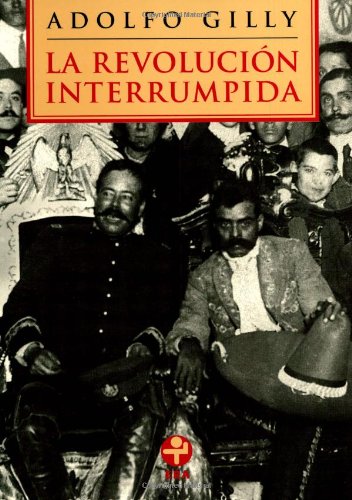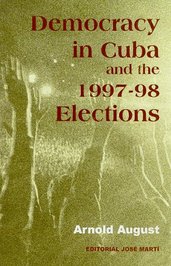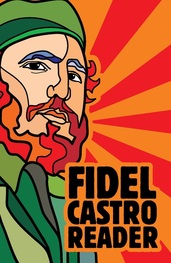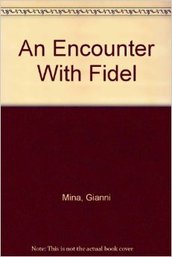Beginning in May 1958, Fidel had begun to take steps toward the establishment of an anti-Batista coalition of organizations and parties. On July 20 in Miami, representatives of the 26th of July Movement established the Civic Revolutionary Front, which was a coalition of various parties and organization that publicly affirmed their opposition to Batista and their support of his overthrow by means of armed struggle. Aside, however, from this common commitment to armed struggle against Batista, the coalition included personalities and organizations representing a variety of views. They included, for example, those that were committed to the preservation of the neocolonial order, who wanted to restore representative democracy but did not have an interest in breaking the core-peripheral economic relation that was at the heart of US neocolonial domination of the island.
With the triumph of the revolution, the strategy of coalition with anti-Batista forces continued. In spite of the political and moral authority that Fidel held at the time of the triumph, he opted not to take power and not to establish political control by the 26th of July Movement. Instead, he formed a coalition government of anti-Batista forces that included conservative lawyers who were organically tied to the national bourgeoisie (see “The Provisional Revolutionary Government of 1959” 9/19/2014).
Fidel’s strategy was to attain a transition to a new government in which the 26th of July Movement had oversight, but not direct power, and with a composition that would calm the bourgeoisie and the United States, thus giving the 26th of July Movement time. Fidel used this time, from January through early May of 1959, to meet with the people, deepening his understanding of their concerns and hopes; to feel out representatives of various Cuban political parties and currents of thought; to assess the reaction of the United States; to travel internationally and to test the international climate of opinion; to promise the people that decisive steps in their interests were soon to come, and to warn them that they should be ready to defend their interests; and to formulate the specifics of the agrarian reform plan.
Fidel understood the fundamental facts of the neocolonial order. He understood that the attainment of true Cuban sovereignty and the protection of the social and economic rights of the people would require a deep social and economic transformation, which inevitably would provoke the hostile reaction of national and international interests that benefitted from the established order. And he understood that such a transformation required an agrarian reform and land redistribution program of substance. In the first months of 1959, he was preparing himself, his party, and his people for the inevitable confrontation with the powers that be. He understood the negative reaction that an agrarian reform program with substance would provoke, but he nonetheless was committed to this necessary and decisive step. Ever mindful of Cuban history and the frustration of the Cuban Revolution in 1878, and again in 1898, and again in 1933, he was determined that, this time, the aspirations and hopes of the Cuban people will be attained.
By the end of April, Fidel was ready with the Agrarian Reform Plan, and it was presented to the Council of Ministers of the Provisional Revolutionary Government on April 28 (see “The Agrarian Reform Law of 1959” 9/23/2014). And the plan was promulgated with the kind symbolism that would characterize Fidel’s political actions throughout his long career: it was promulgated on a date that commemorated the martyrdom of a heroic peasant who had struggled for land, and it was signed in the headquarters of the guerrilla movement that was victorious only because of the participation, support, and heroic sacrifices of peasants. No one could miss the message: “Let the world know that this is a revolution by and for the humble.”
The enactment of the law in such symbolic manner was followed with another action that also would characterize Fidel’s career. An international forum was convoked, seeking to explain to the United States, Canada, and Latin America that revolutionary Cuba desires positive relations with all and respects the opinions of all. Nevertheless, the Agrarian Reform Law must be adopted, because the Cuban nation can no longer surrender its sovereignty to foreign interests, nor can the Cuban national leadership continue to be indifferent to the suffering of the dispossessed.
The agrarian reform law was a radical step that constituted a definitive break with the bourgeoisie, both Cuban and international. But it was a necessary step. In a neocolonial situation, any government that seeks to overcome underdevelopment and poverty must bring to an end two patterns that are integral to the neocolonial world-system: the unequal distribution of land, and the use of land to provide cheap raw materials for the core of the world-economy (see various posts on the origin and development of the modern world-system and on neocolonialism). A government committed to the people must take land from the estate bourgeoisie and transnational corporations and establish alternative land-use patterns and alternative patterns of land distribution that are able to promote and sustain national development.
The Agrarian Reform Law of 1959 was and is the defining moment of the Cuban Revolution. From that date forward, the radical anti-neocolonial character of the Cuban Revolution was made manifest. As Cuban scholar and diplomat Jesus Arboleya would write nearly a half century later, the Agrarian Reform Law “showed that the balance was inclined irremediably toward the most radical sectors,” and it “defined the anti-neocolonial character of the revolution” (2008:144). The triumphant revolution was not seeking a return to representative democracy in a neocolonial context, but a transformation of the neocolonial structures that had defined the Cuban situation since 1902.
With the anti-neocolonial character of the revolution made manifest, the stage was set for the mobilization of powerful national and international forces that had an interest in defending the neocolonial world system. From the point of view of the beneficiaries of the neocolonial order, the Cuban Revolution was a dangerous example. It struck with courage and insight at an essential dimension of the neocolonial world-system. If a small island nation with limited natural resources could challenge the world-system in this way with impunity, what lessons would be drawn by the people of large neocolonized nations that possessed important natural resources for manufacturing and energy and significant markets for surplus manufactured goods?The world must know that any nation that seeks genuine sovereignty will be made to suffer.
From the vantage point of the Cuban Revolution, the manifestation of its essential anti-neocolonial character and the mobilization of powerful forces against it meant that the coalition government no longer was functional. In the battle with powerful actors, the most important arm of the revolution is the support of the people, and maintaining the support of the people requires responding effectively to their needs. Thus, the Council of Ministers replaced conservative ministers with radicals more committed to structuring their ministries to respond to the needs of the people, as we will discuss in the next post.
References
Arboleya, Jesús. 2008. La Revolución del Otro Mundo: Un análisis histórico de la Revolución Cubana. La Habana: Editorial de Ciencias Sociales.
Key words: Third World, revolution, colonialism, neocolonialism, imperialism, democracy, national liberation, sovereignty, self-determination, socialism, Marxism, Leninism, Cuba, Latin America, world-system, world-economy, development, underdevelopment, colonial, neocolonial, blog Third World perspective, Cuban Revolution, Fidel, Agrarian Reform Law of 1959

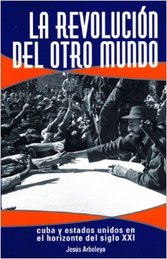
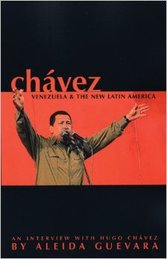
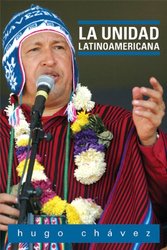

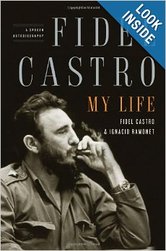
 RSS Feed
RSS Feed
